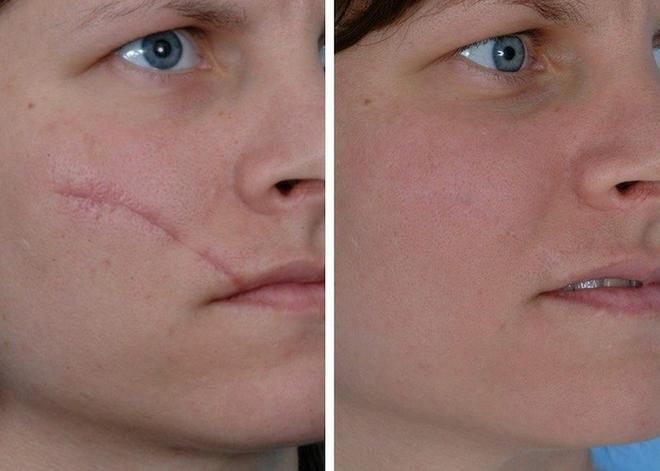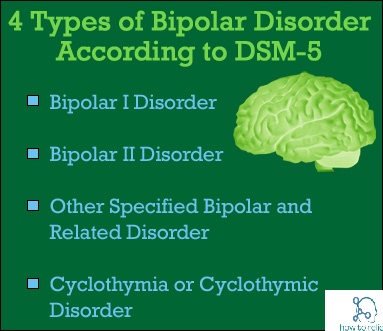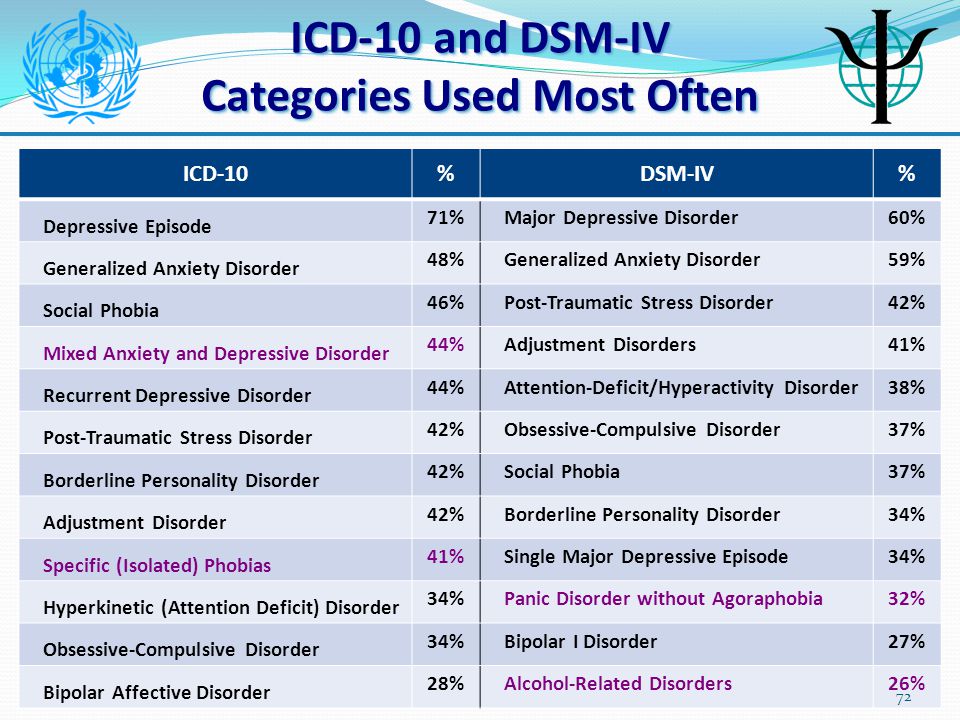How to remove mannerism
Get Rid of Your Annoying Mannerisms
By Naomi Karten - May 14, 2013
We all have mannerisms: things we say or do that are harmless but that might annoy others. I was once on a plane talking with a seatmate who pulled on her nose as she spoke. Really. Every few seconds, another pull. I thought it would come off in her hand. I finally had to discontinue the conversation; her nose-yanking was too disconcerting. Apparently, no one had ever clued her in so she was unaware of this annoying behavior. And the problem with a mannerism like this one is that we may not know we’re doing it until someone tells us.
Other potentially annoying physical mannerisms (to name just a few) include cracking your knuckles, adjusting your glasses, twisting your hair, playing with rubber bands, gesticulating wildly as if you’re on fire, jiggling coins in your pocket, pacing back and forth, twirling a pen, and scratching… but let’s not go there.
I bet you can add several to this list. Oh, by the way, if you’re going to talk to me, don’t cover your mouth with your hand as if you’re trying to keep the words from escaping. I find it very annoying.
And then there are vocal mannerisms or affectations in the way people speak. Some people stuff their sentences with “like,” “um,” “uh,” and “y’know.” These patterns of speech are known as pause fillers, and interestingly, they exist in every language. The book Um: Slips, Stumbles, and Verbal Blunders, and What They Mean points out that we each have a pattern of “um” frequency and usage. Some people say “um” within a sentence, some say “um” between sentences, some say “um” a little, some a lot, some not at all.
Vocal mannerisms include mumbling, as well as speaking too quietly, too loudly, or waytoofast. Also on the list of low-hanging fruit are clichés. Using an occasional cliché is fine. It’s when you’re constantly shooting fish in a barrel, airing dirty laundry, getting your foot in the door, or any of thousands of other clichés that it becomes annoying.
Being human means occasionally saying or doing things that might annoy your co-workers or customers. Fortunately, most such annoyances are things we can easily avoid once we become aware of them. So ask a trusted colleague to let you know if you exhibit any annoying mannerisms, or have a coach or mentor give you feedback. And whenever you talk with someone whose mannerisms annoy you, think about whether you ever do the same. If you do, take steps to, like, um, avoid doing it, y'know?
Tags:
people management
personal improvement
teams
communication
Up Next
The Debate over Software Testing Certification Heats Up
May 14, 2013
About the Author
Naomi Karten is a highly experienced speaker and seminar leader who draws from her psychology and IT backgrounds to help organizations improve customer satisfaction, manage change, and strengthen teamwork. She has delivered seminars and keynotes to more than 100,000 people internationally. Naomi's newest books are Presentation Skills for Technical Professionals and Changing How You Manage and Communicate Change. Her other books and ebooks include Managing Expectations, Communication Gaps and How to Close Them, and How to Survive, Excel and Advance as an Introvert. Readers have described her newsletter, Perceptions & Realities, as lively, informative, and a breath of fresh air. She is a regular columnist for TechWell.com. When not working, Naomi's passion is skiing deep powder. Contact her at [email protected] or via her Web site, www.nkarten.com.
Naomi's newest books are Presentation Skills for Technical Professionals and Changing How You Manage and Communicate Change. Her other books and ebooks include Managing Expectations, Communication Gaps and How to Close Them, and How to Survive, Excel and Advance as an Introvert. Readers have described her newsletter, Perceptions & Realities, as lively, informative, and a breath of fresh air. She is a regular columnist for TechWell.com. When not working, Naomi's passion is skiing deep powder. Contact her at [email protected] or via her Web site, www.nkarten.com.
TechWell Insights To Go
(* Required fields)
Get the latest stories delivered to your inbox every week.
Email *
Country * Please select your countryAfghanistanAland IslandsAlbaniaAlgeriaAmerican SamoaAndorraAngolaAnguillaAntarcticaAntigua and BarbudaArgentinaArmeniaArubaAustraliaAustriaAzerbaijanBahamasBahrainBangladeshBarbadosBelarusBelgiumBelizeBeninBermudaBhutanBoliviaBosnia and HerzegovinaBotswanaBouvet IslandBrazilBritish Indian Ocean TerritoryBritish Virgin IslandsBruneiBulgariaBurkina FasoBurundiCambodiaCameroonCanadaCape VerdeCaribbean NetherlandsCayman IslandsCentral African RepublicChadChileChinaChristmas IslandCocos (Keeling) IslandsColombiaComorosCongo (Brazzaville)Congo (Kinshasa)Cook IslandsCosta RicaCroatiaCubaCuraçaoCyprusCzech RepublicDenmarkDjiboutiDominicaDominican RepublicEcuadorEgyptEl SalvadorEquatorial GuineaEritreaEstoniaEthiopiaFalkland IslandsFaroe IslandsFijiFinlandFranceFrench GuianaFrench PolynesiaFrench Southern TerritoriesGabonGambiaGeorgiaGermanyGhanaGibraltarGreeceGreenlandGrenadaGuadeloupeGuamGuatemalaGuernseyGuineaGuinea-BissauGuyanaHaitiHeard Island and McDonald IslandsHondurasHong Kong S. A.R., ChinaHungaryIcelandIndiaIndonesiaIranIraqIrelandIsle of ManIsraelItalyIvory CoastJamaicaJapanJerseyJordanKazakhstanKenyaKiribatiKuwaitKyrgyzstanLaosLatviaLebanonLesothoLiberiaLibyaLiechtensteinLithuaniaLuxembourgMacao S.A.R., ChinaMacedoniaMadagascarMalawiMalaysiaMaldivesMaliMaltaMarshall IslandsMartiniqueMauritaniaMauritiusMayotteMexicoMicronesiaMoldovaMonacoMongoliaMontenegroMontserratMoroccoMozambiqueMyanmarNamibiaNauruNepalNetherlandsNetherlands AntillesNew CaledoniaNew ZealandNicaraguaNigerNigeriaNiueNorfolk IslandNorthern Mariana IslandsNorth KoreaNorwayOmanPakistanPalauPalestinian TerritoryPanamaPapua New GuineaParaguayPeruPhilippinesPitcairnPolandPortugalPuerto RicoQatarReunionRomaniaRussiaRwandaSaint BarthélemySaint HelenaSaint Kitts and NevisSaint LuciaSaint Martin (French part)Saint Pierre and MiquelonSaint Vincent and the GrenadinesSamoaSan MarinoSao Tome and PrincipeSaudi ArabiaSenegalSerbiaSeychellesSierra LeoneSingaporeSint MaartenSlovakiaSloveniaSolomon IslandsSomaliaSouth AfricaSouth Georgia and the South Sandwich IslandsSouth KoreaSouth SudanSpainSri LankaSudanSurinameSvalbard and Jan MayenSwazilandSwedenSwitzerlandSyriaTaiwanTajikistanTanzaniaThailandTimor-LesteTogoTokelauTongaTrinidad and TobagoTunisiaTurkeyTurkmenistanTurks and Caicos IslandsTuvaluU.
A.R., ChinaHungaryIcelandIndiaIndonesiaIranIraqIrelandIsle of ManIsraelItalyIvory CoastJamaicaJapanJerseyJordanKazakhstanKenyaKiribatiKuwaitKyrgyzstanLaosLatviaLebanonLesothoLiberiaLibyaLiechtensteinLithuaniaLuxembourgMacao S.A.R., ChinaMacedoniaMadagascarMalawiMalaysiaMaldivesMaliMaltaMarshall IslandsMartiniqueMauritaniaMauritiusMayotteMexicoMicronesiaMoldovaMonacoMongoliaMontenegroMontserratMoroccoMozambiqueMyanmarNamibiaNauruNepalNetherlandsNetherlands AntillesNew CaledoniaNew ZealandNicaraguaNigerNigeriaNiueNorfolk IslandNorthern Mariana IslandsNorth KoreaNorwayOmanPakistanPalauPalestinian TerritoryPanamaPapua New GuineaParaguayPeruPhilippinesPitcairnPolandPortugalPuerto RicoQatarReunionRomaniaRussiaRwandaSaint BarthélemySaint HelenaSaint Kitts and NevisSaint LuciaSaint Martin (French part)Saint Pierre and MiquelonSaint Vincent and the GrenadinesSamoaSan MarinoSao Tome and PrincipeSaudi ArabiaSenegalSerbiaSeychellesSierra LeoneSingaporeSint MaartenSlovakiaSloveniaSolomon IslandsSomaliaSouth AfricaSouth Georgia and the South Sandwich IslandsSouth KoreaSouth SudanSpainSri LankaSudanSurinameSvalbard and Jan MayenSwazilandSwedenSwitzerlandSyriaTaiwanTajikistanTanzaniaThailandTimor-LesteTogoTokelauTongaTrinidad and TobagoTunisiaTurkeyTurkmenistanTurks and Caicos IslandsTuvaluU. S. Virgin IslandsUgandaUkraineUnited Arab EmiratesUnited KingdomUnited StatesUnited States Minor Outlying IslandsUruguayUzbekistanVanuatuVaticanVenezuelaVietnamWallis and FutunaWestern SaharaYemenZambiaZimbabwe
S. Virgin IslandsUgandaUkraineUnited Arab EmiratesUnited KingdomUnited StatesUnited States Minor Outlying IslandsUruguayUzbekistanVanuatuVaticanVenezuelaVietnamWallis and FutunaWestern SaharaYemenZambiaZimbabwe
Leave this field blank
How to Break a Habit: 15 Tips for Success
Everyone has habits, and there’s nothing inherently wrong with them. Some are pretty useful — maybe you lay out your clothes for work the night before or automatically turn off the lights when you leave a room.
But other habits, such as biting your nails, drinking caffeine too late in the day, or hitting snooze too many times, might not be so beneficial.
Breaking unwanted habits can be difficult, especially if you’ve been engaging in them for a long time. But understanding how habits form in the first place can ease the process.
The making of a habit
There are a few theories around how habits develop. The idea of the 3 Rs is one of the main ones:
- Reminder.
 This is a trigger, or cue, that could be a conscious behavior, such as flushing the toilet, or a feeling, such as nervousness.
This is a trigger, or cue, that could be a conscious behavior, such as flushing the toilet, or a feeling, such as nervousness. - Routine. This is the behavior associated with the trigger. Flushing the toilet cues you to wash your hands, while feeling nervous triggers biting your nails. Doing something over and over can make the behavior routine.
- Reward. The reward associated with a behavior also helps make a habit stick. If you do something that causes enjoyment or relieves distress, the pleasurable release of dopamine in your brain can make you want to do it again.
With the idea of the 3 Rs in mind, here are 15 tips to help you break that old, stubborn habit.
Remember, triggers are the first step in developing a habit. Identifying the triggers behind your habitual behaviors is the first step in moving past them.
Spend a few days tracking your habit to see whether it follows any patterns.
Note things like:
- Where does the habitual behavior happen?
- What time of day?
- How do you feel when it happens?
- Are other people involved?
- Does it happen right after something else?
Let’s say you want to stop staying up past midnight. After a few days of tracking your behavior, you realize you tend to stay up later if you start watching TV or chatting with friends after dinner. But you go to bed earlier if you read or take a walk.
After a few days of tracking your behavior, you realize you tend to stay up later if you start watching TV or chatting with friends after dinner. But you go to bed earlier if you read or take a walk.
You decide to stop watching TV and turn off your phone by 9 p.m. on weeknights. Removing the trigger — watching TV or talking to friends — makes it harder to carry out the routine of staying up too late.
Why do you want to break or change a certain habit? Research from 2012 suggests it may be easier to change your behavior when the change you want to make is valuable or beneficial to you.
Take a few minutes to consider why you want to break the habit and any benefits you see resulting from the change. Listing these reasons may help you think of a few that hadn’t occurred to you yet.
For added motivation, write your reasons down on a piece of paper and keep it on your fridge, bathroom mirror, or another place where you’ll see it regularly.
Seeing the list can keep the change you’re trying to make fresh in your mind.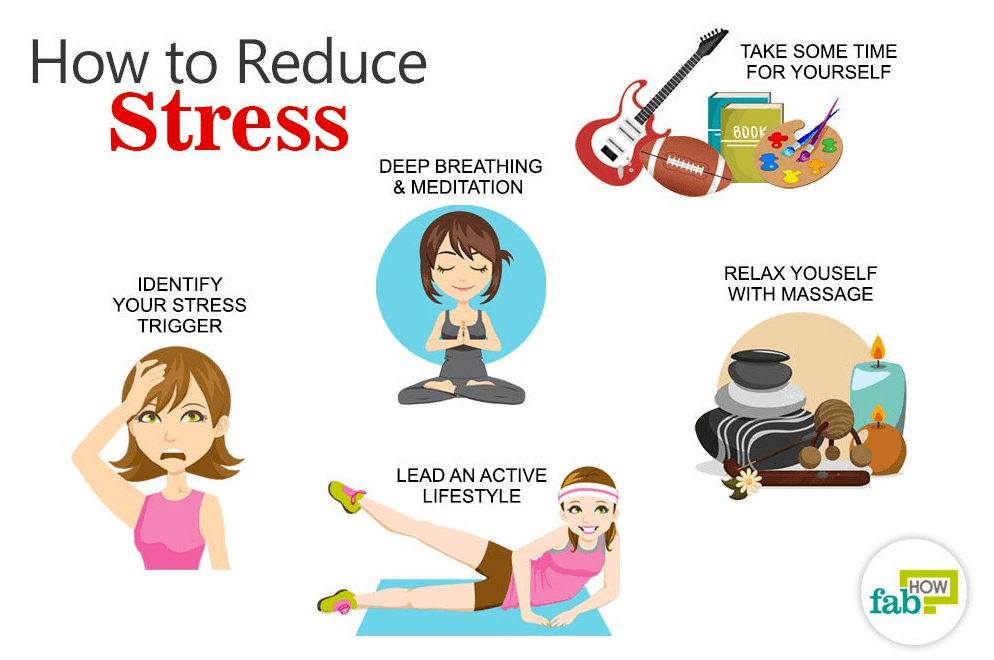 If you do happen to fall back into the habit, your list reminds you why you want to keep trying.
If you do happen to fall back into the habit, your list reminds you why you want to keep trying.
If you and a friend or partner both want to break an unwanted habit, try to do it together.
Say you both want to stop smoking. Dealing with cravings on your own can be tough. Quitting along with a friend won’t make the cravings go away. But they might be easier to deal with when facing them with someone else.
Make it a point to cheer each other’s successes and encourage each other through setbacks.
A friend can still offer support even if they don’t have any habits they want to change. Consider telling a trusted friend about the habit you’re trying to break. They can encourage you in times of doubt and gently remind you of your goal if they notice you slipping back into old habits.
Mindfulness can help you develop awareness around your thoughts, feelings, and actions. This practice involves simply observing impulses that relate to your habit without judging them or reacting to them.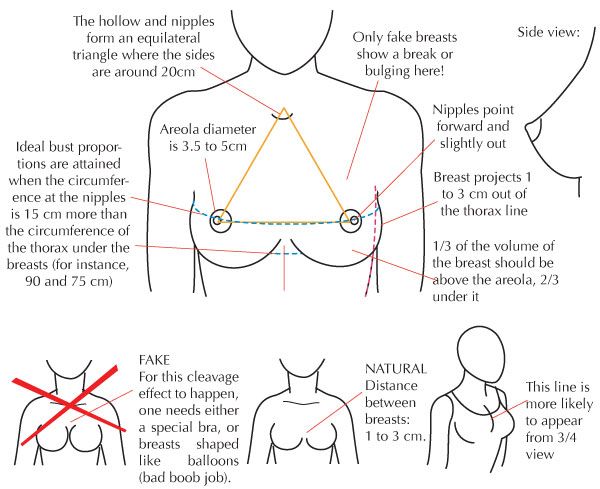
As you become more aware of these routine behaviors and the triggers that lead to them, you may find it easier to consider other options, such as avoiding reminder cues or not acting on the urges.
Practicing mindfulness can also help you notice ways your habit affects your daily life. As you start to recognize these effects, you may feel more driven to work on changing the habit.
You might have an easier time breaking a habit if you replace the unwanted behavior with a new behavior, instead of simply trying to stop the unwanted behavior.
Say you want to stop reaching for candy when you’re hungry at work. If you simply try to avoid the candy dish, you might fall back into the habit when you can’t resist hunger. But bringing in a Tupperware of dried fruit and nuts to keep at your desk gives you another snack option.
As you repeat the new behavior, the impulse to follow the new routine develops. Eventually, after you see rewards from the new habit — more energy and less of a sugar crash — the urge to keep doing this behavior might outweigh the desire to pursue the old habit.
Replacing harmful habits, such as substance misuse, with more positive ones can have a lot of benefit. But it’s important to remember “good” habits, such as exercise, can still become excessive. Even “healthy” eating can have negative effects when taken to extremes.
Using stickers, sticky notes, or other visual reminders wherever the habit behavior happens can help you rethink the action when something triggers you.
Here are a few ideas:
- Want to break the habit of drinking soda with every meal? Try leaving small stickers on your refrigerator that you’ll see when you go to reach for a can.
- Trying to remember to turn off lights when you leave a room? Leave a note for yourself on the light switch or door.
- Want to start keeping your keys in a designated place so you stop losing them frequently? Leave a dish for your keys in the first place you’ll see it when you return home.
You can also use a smartphone for reminders.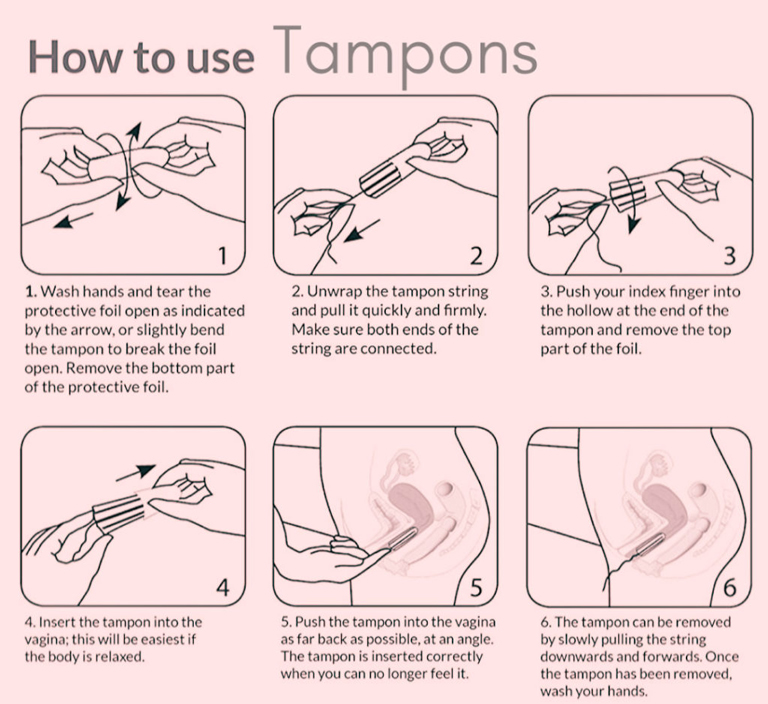 Set your alarm and add a motivating note to yourself, such as “Time to turn off the TV! :)” or “After-dinner walk — remember how good it feels!”
Set your alarm and add a motivating note to yourself, such as “Time to turn off the TV! :)” or “After-dinner walk — remember how good it feels!”
Breaking a habit can be challenging, though you might find some habits easier to shake than others.
“It’s very easy to slip back into old patterns, particularly when the new ones aren’t solidified yet,” said Erika Myers, LPC. “Change is hard. Remember, it took a while to build up those habits, so you won’t lose them in a day.”
Try to mentally prepare for slipups so you won’t feel guilty or discouraged if you do. Maybe you commit to jotting down three bullet points about how you felt as you were doing the habit, or do a quick breathing exercise.
Try to learn from your slipups. Be honest with yourself about what led to the setback, and consider whether changing your approach might help you stay more on track.
Accepting you’ll probably slip up a few times when trying to break a habit and coming up with a plan is one thing. Preventing feelings of frustration and failure when you do slip up is another story.
Preventing feelings of frustration and failure when you do slip up is another story.
If you fall back into an old habit, you might wonder, “Can I really do this?” You might begin to doubt yourself and feel inclined to give up.
Myers recommends looking at your successes instead. Maybe you’re trying to quit smoking and you succeed for 3 days in a row. On the fourth day, you have a cigarette and spend the rest of the night feeling like a failure.
“Having a cigarette after going a few days without smoking doesn’t take away those past days,” said Myers. Remember, you can make a different choice tomorrow.
“You’re looking for movement in a particular direction rather than perfection,” Myers added. “Instead of focusing on your end goal, consider this: Anything you do that’s more of what you want is good.”
Trying to kick multiple habits in the same go? The image of a new, improved self can be a powerful motivator, especially when you first decide to change unwanted habits.
This can sometimes work. If the habits go together, you might find it easier to address them at the same time. For example, if you want to stop smoking and drinking, and you always do those two things together, quitting both at once may make the most sense.
But experts generally recommend starting small. Aim to change one habit at a time. Addressing habits in steps can also help, even if these steps seem too small or easily manageable in the beginning.
Thinking back to the soda-with-every-meal example, you could start by not drinking soda with dinner for a week. Then, bump it up to not having it with dinner or lunch the next week.
Your surroundings can sometimes have a big impact on your habits.
Maybe you’re trying to break the habit of always ordering takeout because it’s costing you too much money. But every time you go into the kitchen, you see the to-go menus hanging on your fridge. You could try replacing the menu with printouts of easy recipes you know you’ll enjoy.
Other examples include:
- leaving a journal, book, or hobby items (sketchbooks, crafts, or games) on your coffee table to encourage you to pick them up instead of scrolling through social media
- spending 10 or 15 minutes tidying up your house each evening to encourage you to keep things clutter-free
- changing up your morning walk to work so you don’t pass the cafe with the tempting, overpriced latte
Keep in mind that the people you surround yourself with are also part of your environment. Consider taking a break from spending time with those who contribute to your habit or don’t support your process of breaking one.
Breaking habits doesn’t have to be an entirely hands-on, physical process. You can practice new replacement habits mentally, too.
Imagine yourself in a triggering environment or situation, such as the morning before your performance review. How would you typically react? You might see yourself anxiously biting your nails or drumming your pen against your desk.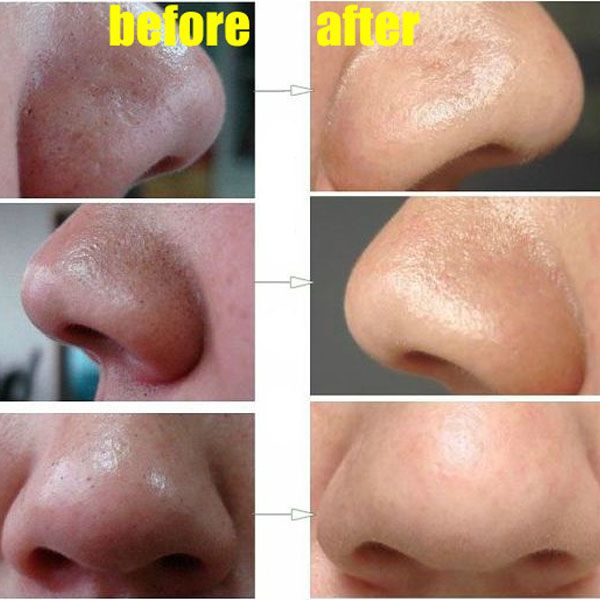
How could you react instead? Visualize yourself practicing deep breathing, walking to get a drink of water, sorting through old notes or files, or tidying desk drawers — anything that keeps your hands busy and helps calm you.
Practicing a different response in your mind can help it become more familiar when you face the situation in reality.
Many people find it easier to create positive changes in life when they begin from a place of wellness.
If you’re already dealing with other challenges, such as work stress, relationship troubles, or health problems, trying to break a habit can lead to more distress than the actual habit.
When breaking a habit, it’s especially important to prioritize your own wellness. This not only boosts your chances of success, but it also helps you keep functioning in the face of challenges.
Try these self-care tips:
- Make time for restful sleep.
- Eat regular, nutritious meals.
- See your healthcare provider for any long-term concerns.

- Aim to be physically active most days.
- Take at least a little time each day for hobbies, relaxation, or other things that improve your mood.
Remember, breaking a habit can be incredibly difficult. Make sure to acknowledge how far you’ve come, and try to give yourself rewards along the way. Even small motivators, like telling yourself what a great job you’re doing, can boost your confidence and increase your drive to keep trying.
When you focus on the progress you’ve made, you’re less likely to become discouraged or engage in negative self-talk, both of which can do a number on your motivation.
“Celebrate your wins,” Erika recommended. “Maybe you aren’t ready to run a marathon, but if running a mile this week is easier than it was last week, that’s success.”
There’s a common myth that it takes 21 days to make or break a habit. But where does that figure come from?
It’s likely from a study involving people who had plastic surgery.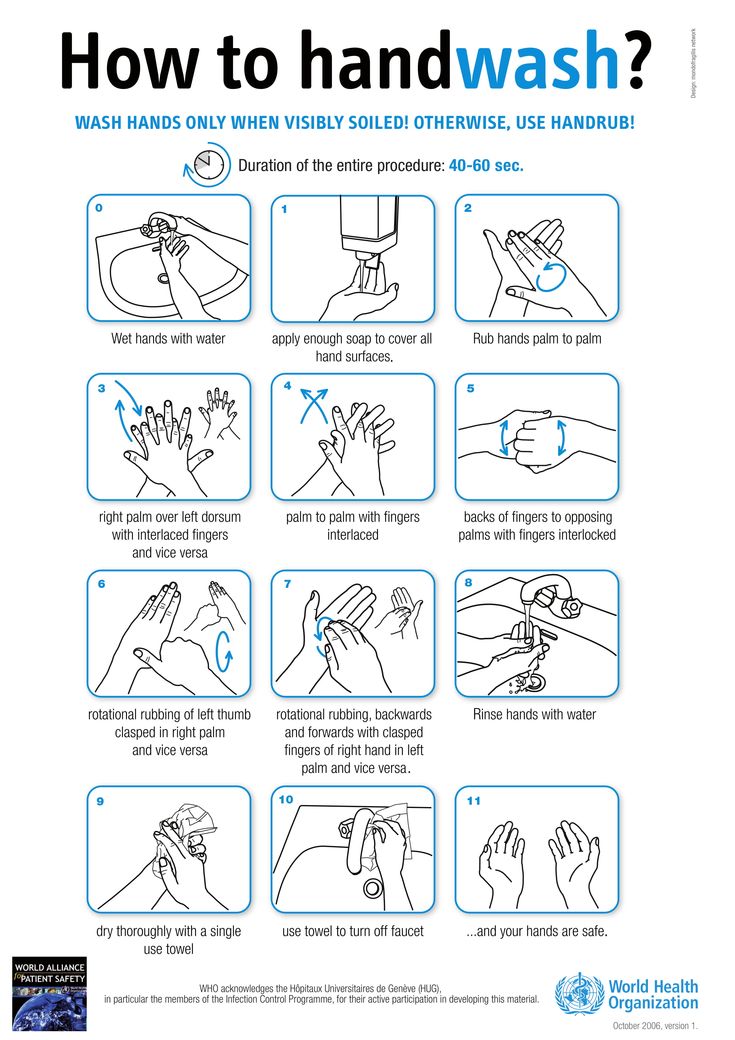 Most of them adjusted to their changed appearance within 3 weeks. That’s pretty different from actively working to break and ingrained habit.
Most of them adjusted to their changed appearance within 3 weeks. That’s pretty different from actively working to break and ingrained habit.
Realistically, experts believe it takes about 10 weeks (2 to 3 months) or more to break an unwanted happen. Of course, some habits may take more or less time to break.
The amount of time it takes to break a habit depends on several things, according to Myers.
These include:
- how long you’ve had the habit
- the emotional, physical, or social needs the habit fulfills
- whether you have support or help breaking the habit
- the physical or emotional reward the habit provides
If a few weeks have passed, and you feel you haven’t made much progress, it can help to revisit your approach. But you might also consider seeking help from a mental health professional, especially for habits that are more deeply ingrained in your behavior or cause you a lot of distress
You might have success breaking some habits, such as buying lunch every day or skipping the gym, on your own, with a bit of effort and dedication.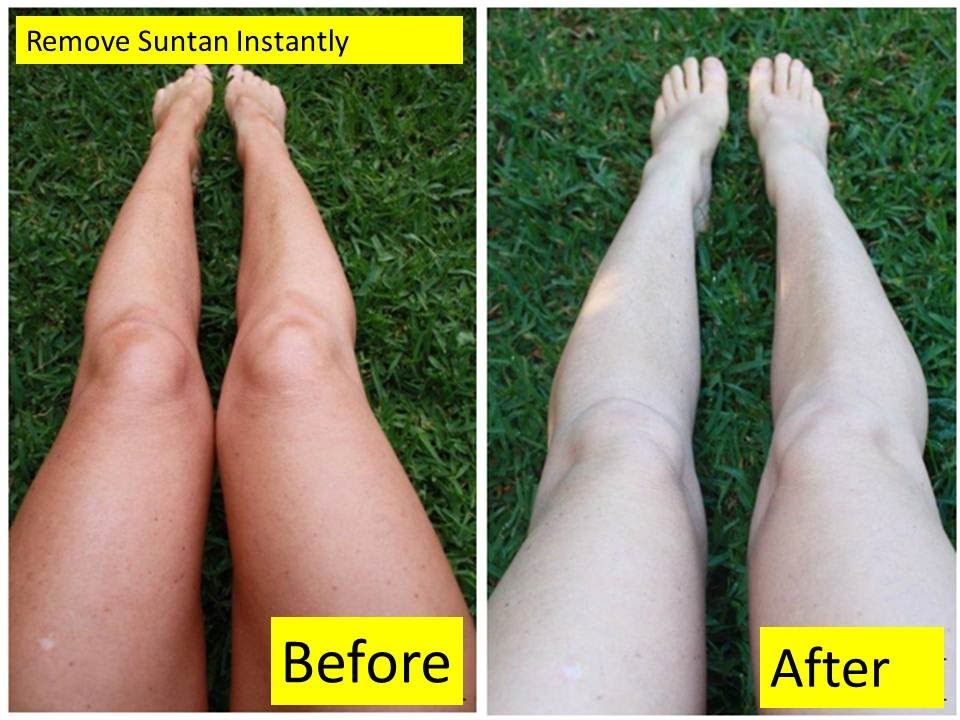
But if you want to address deeper habits, such as emotional eating, compulsions, alcohol misuse, or addiction, the support of a trained mental health professional can make a world of difference.
Working through these issues alone can be tough, and a therapist or counselor can offer guidance and support.
A mental health professional can help you:
- identify changes you want to make
- explore anything blocking you from change
- identify your motivations for change
- get perspective on your progress
- learn how to counter and cope with negative self-talk
“The accountability of meeting with someone regularly can also provide structure that supports the changes you’ve made,” Myers concluded.
It might not seem like it in the moment, but over time, your new habits will become established in your daily life. Soon enough, they may even feel as natural as your old habits.
Crystal has previously worked as a writer and editor for GoodTherapy. Her fields of interest include Asian languages and literature, Japanese translation, cooking, natural sciences, sex positivity, and mental health. In particular, she’s committed to helping decrease stigma around mental health issues.
Her fields of interest include Asian languages and literature, Japanese translation, cooking, natural sciences, sex positivity, and mental health. In particular, she’s committed to helping decrease stigma around mental health issues.
causes, symptoms, diagnosis and treatment
Manner is a feature of behavior or a psychopathological symptom, which is characterized by feigned actions, exaggeration of gestures, facial expressions and pronunciation. Many actions are meaningless, look strange, ridiculous. Speech is pretentious, emotions are grotesque, unnatural. Mannerism can be a personality trait or a sign of mental illness. Its diagnosis is carried out by clinical methods. Treatment depends on the cause and may include psychotherapy, medication support.
General information
"Manner" in French means "mode of action", "way of behaving". However, “good manners” and “manner” are different concepts. In the first case, we are talking about a high level of upbringing of a person, in the second - about the originality and unnaturalness of behavior.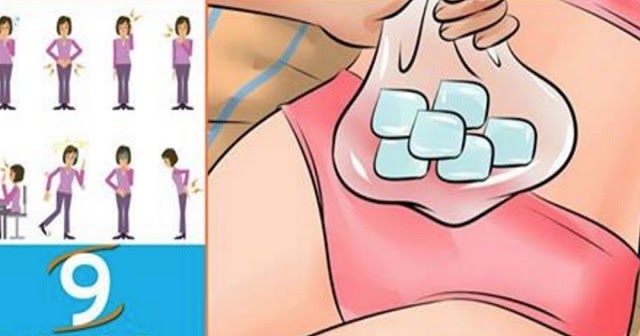 Mannerism is more common in children 6-8 years old, young and middle-aged women. Depending on the severity, it is considered as a result of upbringing or as a symptom of mental illness.
Mannerism is more common in children 6-8 years old, young and middle-aged women. Depending on the severity, it is considered as a result of upbringing or as a symptom of mental illness.
Mannerability
Causes of mannerisms
Pretentiousness, artificiality of behavior sometimes occurs during the age crisis of 7 years, but gradually disappears by the beginning of the stable period. During this period, it is caused by the desire of the child to become like parents, teachers and other significant people. If mannerism persists and does not go away by the age of 8-9 or is observed in adults, then its causes may be:
- Wrong education. In mentally healthy people, mannered behavior indicates a disharmonious type of upbringing in childhood. Often it is associated with the dominant role of the mother, excessive requirements for observing the rules of etiquette, and a lack of attention from parents. The mannerism is moderately pronounced, often does not require treatment.

- Hysterical personality disorder. In hysteroid psychopathy, the emotions and actions of patients are distinguished by theatricality, demonstrativeness, and affectation. Mannering is used to attract the attention of others, it is always combined with vivid emotions - laughter, crying, excitement.
- Schizoid personality disorder. In schizoid psychopathy, mannerisms are a manifestation of an attraction to pretentiousness, non-standard. It is used by patients to overcome pathological modesty and timidity. Being a set of behavioral patterns, it allows you to maintain formal contacts with people.
- Schizophrenia. The mannerisms are especially pronounced in patients with hebephrenic form of the disease, with catatonia (during periods of remission). The natural simplicity and elegance of movements are lost, emotions become emasculated, speech becomes florid. The more progressive the course of the disease, the more primitive, stereotypical mannerisms look.

Pathogenesis
In the absence of mental illness, mannerisms arise on the basis of uncertainty, anxiety and insecurities. These traits are manifested in childhood, reinforced by the style of education. Mannering acts as a kind of psychological defense that allows you to hide true experiences from others. The choice of this type of behavior and interaction is unconscious, but in adulthood, many people notice mannerisms in themselves and try to correct them.
In personality disorders, mannerism becomes more pronounced, static. Criticism to this symptom decreases, patients do not notice, do not try to correct it. Mannery behavior supports a certain way of adapting an individual to society: in hysterical disorder it attracts the attention of others, in schizoid it helps to express oneself and maintain interpersonal relationships.
In persons with schizophrenia, the pathogenetic basis of mannerisms is distorted perception and thinking, emotional alienation. With hebephrenia, it manifests itself along with grimacing and foolishness, and with catatonia - with impulsiveness, pretentiousness of movements, stereotypes. The unnatural structure of speech refers to the productive symptoms of the disease.
With hebephrenia, it manifests itself along with grimacing and foolishness, and with catatonia - with impulsiveness, pretentiousness of movements, stereotypes. The unnatural structure of speech refers to the productive symptoms of the disease.
Symptoms of mannerisms
Some children of preschool and primary school age begin to behave unnaturally and feignedly: they imitate adults, make faces, and perform demonstrative acts. During communication, they build grimaces, wrinkle their noses, rub their eyes, clear their throats. In situations where you need to stay in one place or complete an educational task, they begin to wring their hands theatrically, stomp their feet, and click their joints. The mannerism increases with overwork, drowsiness, emotional tension.
The key symptoms in adolescents and adults are artificiality of actions, exaggerated manners, affectation of facial expressions and gestures. When dealing with such a person, a feeling of insincerity arises. Words can be absurd, actions can be meaningless. There is a lack of simplicity, coordination, plasticity. Such people are often tense, unable to adapt to a changing situation, to create trusting relationships.
Words can be absurd, actions can be meaningless. There is a lack of simplicity, coordination, plasticity. Such people are often tense, unable to adapt to a changing situation, to create trusting relationships.
People with hysterical personality disorder are characterized by a desire to attract attention, insecurity, egocentrism. They need new impressions, reproduce the rituals of the festivities, try to be visible in any event. Hysterical mannerisms are distinguished by pronounced demonstrativeness, theatricality, and flaunting.
With a personality disorder of the schizoid type, disharmony and paradoxical appearance, behavior, and emotions come to the fore. The movements are somewhat unnatural, dysplastic, the gait is angular. Facial expressions lack liveliness, often represented by a set of "masks" that more or less fit the current situation. The mannerism of schizoid personalities acts as an attempt to express their individuality, to establish and maintain communication.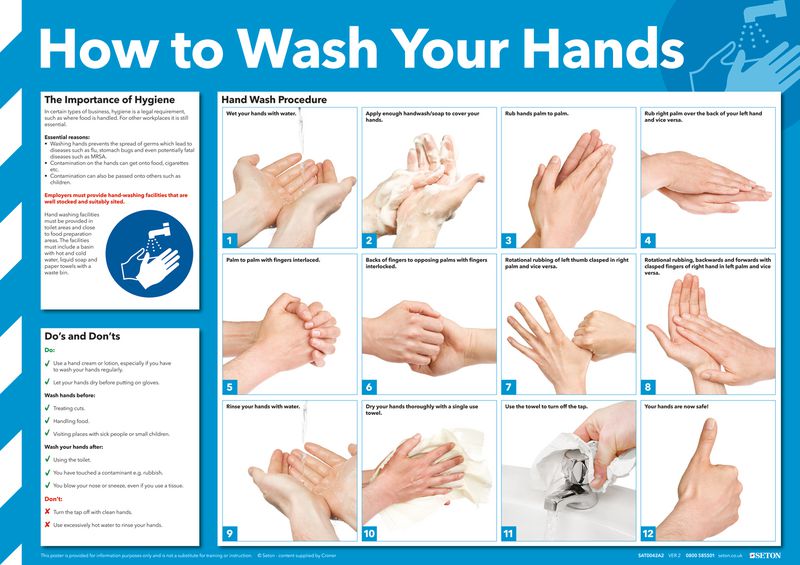
Speech becomes mannered in patients with schizophrenia. It has an overly diligent, refined articulation, contains unusual words, including neologisms. The sentences are too pompous, philosophical, not corresponding in content to the topic of the conversation. The hebephrenic form of the disease is manifested by a pronounced mannerism of behavior with a predominance of foolishness and childishness.
Complications
Children's mannerisms cause conflicts with parents and teachers. The child's behavior is assessed as disobedience, unwillingness to study at school, attention deficit. In the classroom, such children can become "black sheep", "outcasts" because of the originality and insincerity of behavior. The problems of uncertainty, complexes, and anxiety remain unresolved.
Mannerism leads to social maladjustment of adults. This complication is especially pronounced in men: the pretentiousness of postures, movements, statements is associated by others with femininity or homosexuality. Manipulative men are aggressively attacked by members of the same sex, have difficulty in trying to create romantic relationships, as women are more inclined to be friends with them.
Manipulative men are aggressively attacked by members of the same sex, have difficulty in trying to create romantic relationships, as women are more inclined to be friends with them.
Diagnosis
Revealing mannerisms as a symptom of a psychopathological disorder is the task of a psychiatrist. When mannerisms are present in a person's character, then the diagnosis can be carried out by a psychotherapist or psychologist. In addition to determining the signs of a symptom, it is necessary to differentiate its causes (schizophrenia, psychopathy of the schizoid or hysteroid type). Special examination methods have not been developed, a clinical approach is used, which includes the following diagnostic procedures:
- History taking. The doctor determines the presence of a mental disorder in the patient. If the appeal is primary, it determines the hereditary burden, listens to the complaints of the patient himself, and in severe cases, interviews members of his family.
 Anamnestic data allows you to establish what conditions caused the mannerisms.
Anamnestic data allows you to establish what conditions caused the mannerisms. - Clinical conversation. Communication with the patient allows you to identify the characteristic features of the structure of speech, pronunciation. Often sentences are pronounced with a changed logical stress, a kind of emotional coloring. The intonation is unnatural, statements contain many introductory words, slang expressions, interjections.
- Observation. An assessment of movements, facial expressions, behavior is carried out. Most patients have staging postures, demonstrative gestures, such as placing hands on the forehead to represent fatigue. Facial expressions are pronounced, but not sufficiently diverse, consisting of patterns. Movements are dysplastic, often excessive.
Treatment of mannerisms
Therapy is required in cases where mannerisms are a sign of mental pathology or the cause of a person's social adaptation disorder. The treatment plan is drawn up by a psychiatrist or psychotherapist, focusing on diagnostic data. All procedures are performed on an outpatient basis, except in cases of exacerbation of schizophrenia. They include:
The treatment plan is drawn up by a psychiatrist or psychotherapist, focusing on diagnostic data. All procedures are performed on an outpatient basis, except in cases of exacerbation of schizophrenia. They include:
- Psychotherapy. The help of a psychotherapist is effective if the patient is aware of the presence of mannerisms, seeks to change behavior. Individual sessions are held, in which the true cause of mannerisms is clarified. The techniques of cognitive-behavioral therapy, psychoanalysis, gestalt therapy are used. Their goal is to reduce anxiety, increase adaptive skills, and resolve internal conflicts.
- Medical correction. Treatment with drugs is prescribed for patients with mental disorders. It is selected taking into account the characteristics of the disease, is symptomatic. Thus, in schizophrenia, mannerisms decrease while taking antipsychotics. Patients with hysteroid psychopathy are prescribed drugs with a sedative effect
- Family counseling.
 When mannerism is diagnosed in a child, it is recommended to consult parents on the issues of upbringing and mental development of children. If mother and father change their attitude towards children, make the family environment more comfortable, anxiety and emotional stress decrease. The need for mannerisms is reduced.
When mannerism is diagnosed in a child, it is recommended to consult parents on the issues of upbringing and mental development of children. If mother and father change their attitude towards children, make the family environment more comfortable, anxiety and emotional stress decrease. The need for mannerisms is reduced.
Prognosis and prevention
Mannerism does not pose a particular threat to mental health. The prognosis is favorable in most cases, although complete elimination of the symptom is difficult to achieve with persistent variants of psychopathy and schizophrenia. Prevention of mannerisms in healthy children and adolescents comes down to maintaining the right upbringing, preventing anxiety and insecurity. With psychopathy, schizophrenia, the basis is adequate treatment and social rehabilitation.
causes, symptoms, diagnosis and treatment
Manner is a feature of behavior or a psychopathological symptom, which is characterized by feigned actions, exaggerated gestures, facial expressions and pronunciation. Many actions are meaningless, look strange, ridiculous. Speech is pretentious, emotions are grotesque, unnatural. Mannerism can be a personality trait or a sign of mental illness. Its diagnosis is carried out by clinical methods. Treatment depends on the cause and may include psychotherapy, medication support.
Many actions are meaningless, look strange, ridiculous. Speech is pretentious, emotions are grotesque, unnatural. Mannerism can be a personality trait or a sign of mental illness. Its diagnosis is carried out by clinical methods. Treatment depends on the cause and may include psychotherapy, medication support.
General information
"Manner" in French means "mode of action", "way of behaving". However, “good manners” and “manner” are different concepts. In the first case, we are talking about a high level of upbringing of a person, in the second - about the originality and unnaturalness of behavior. Mannerism is more common in children 6-8 years old, young and middle-aged women. Depending on the severity, it is considered as a result of upbringing or as a symptom of mental illness.
Mannerability
Causes of mannerisms
Pretentiousness, artificiality of behavior sometimes occurs during the age crisis of 7 years, but gradually disappears by the beginning of the stable period. During this period, it is caused by the desire of the child to become like parents, teachers and other significant people. If mannerism persists and does not go away by the age of 8-9 or is observed in adults, then its causes may be:
During this period, it is caused by the desire of the child to become like parents, teachers and other significant people. If mannerism persists and does not go away by the age of 8-9 or is observed in adults, then its causes may be:
- Wrong education. In mentally healthy people, mannered behavior indicates a disharmonious type of upbringing in childhood. Often it is associated with the dominant role of the mother, excessive requirements for observing the rules of etiquette, and a lack of attention from parents. The mannerism is moderately pronounced, often does not require treatment.
- Hysterical personality disorder. In hysteroid psychopathy, the emotions and actions of patients are distinguished by theatricality, demonstrativeness, and affectation. Mannering is used to attract the attention of others, it is always combined with vivid emotions - laughter, crying, excitement.
- Schizoid personality disorder. In schizoid psychopathy, mannerisms are a manifestation of an attraction to pretentiousness, non-standard.
 It is used by patients to overcome pathological modesty and timidity. Being a set of behavioral patterns, it allows you to maintain formal contacts with people.
It is used by patients to overcome pathological modesty and timidity. Being a set of behavioral patterns, it allows you to maintain formal contacts with people. - Schizophrenia. The mannerisms are especially pronounced in patients with hebephrenic form of the disease, with catatonia (during periods of remission). The natural simplicity and elegance of movements are lost, emotions become emasculated, speech becomes florid. The more progressive the course of the disease, the more primitive, stereotypical mannerisms look.
Pathogenesis
In the absence of mental illness, mannerisms arise on the basis of uncertainty, anxiety and insecurities. These traits are manifested in childhood, reinforced by the style of education. Mannering acts as a kind of psychological defense that allows you to hide true experiences from others. The choice of this type of behavior and interaction is unconscious, but in adulthood, many people notice mannerisms in themselves and try to correct them.
In personality disorders, mannerism becomes more pronounced, static. Criticism to this symptom decreases, patients do not notice, do not try to correct it. Mannery behavior supports a certain way of adapting an individual to society: in hysterical disorder it attracts the attention of others, in schizoid it helps to express oneself and maintain interpersonal relationships.
In persons with schizophrenia, the pathogenetic basis of mannerisms is distorted perception and thinking, emotional alienation. With hebephrenia, it manifests itself along with grimacing and foolishness, and with catatonia - with impulsiveness, pretentiousness of movements, stereotypes. The unnatural structure of speech refers to the productive symptoms of the disease.
Symptoms of mannerisms
Some children of preschool and primary school age begin to behave unnaturally and feignedly: they imitate adults, make faces, and perform demonstrative acts. During communication, they build grimaces, wrinkle their noses, rub their eyes, clear their throats. In situations where you need to stay in one place or complete an educational task, they begin to wring their hands theatrically, stomp their feet, and click their joints. The mannerism increases with overwork, drowsiness, emotional tension.
During communication, they build grimaces, wrinkle their noses, rub their eyes, clear their throats. In situations where you need to stay in one place or complete an educational task, they begin to wring their hands theatrically, stomp their feet, and click their joints. The mannerism increases with overwork, drowsiness, emotional tension.
The key symptoms in adolescents and adults are artificiality of actions, exaggerated manners, affectation of facial expressions and gestures. When dealing with such a person, a feeling of insincerity arises. Words can be absurd, actions can be meaningless. There is a lack of simplicity, coordination, plasticity. Such people are often tense, unable to adapt to a changing situation, to create trusting relationships.
People with hysterical personality disorder are characterized by a desire to attract attention, insecurity, egocentrism. They need new impressions, reproduce the rituals of the festivities, try to be visible in any event.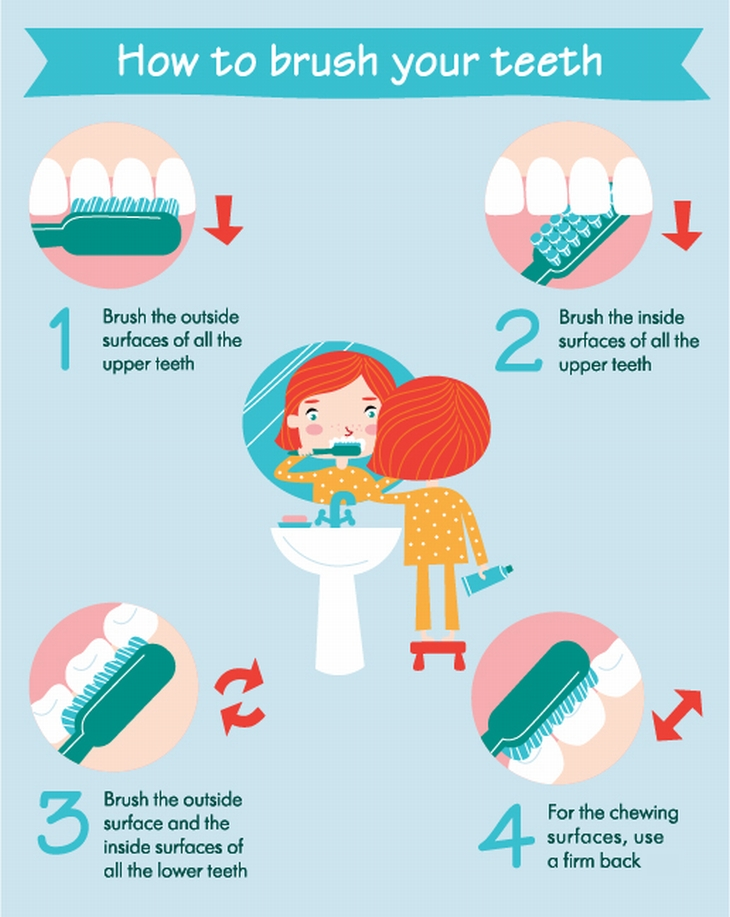 Hysterical mannerisms are distinguished by pronounced demonstrativeness, theatricality, and flaunting.
Hysterical mannerisms are distinguished by pronounced demonstrativeness, theatricality, and flaunting.
With a personality disorder of the schizoid type, disharmony and paradoxical appearance, behavior, and emotions come to the fore. The movements are somewhat unnatural, dysplastic, the gait is angular. Facial expressions lack liveliness, often represented by a set of "masks" that more or less fit the current situation. The mannerism of schizoid personalities acts as an attempt to express their individuality, to establish and maintain communication.
Speech becomes mannered in patients with schizophrenia. It has an overly diligent, refined articulation, contains unusual words, including neologisms. The sentences are too pompous, philosophical, not corresponding in content to the topic of the conversation. The hebephrenic form of the disease is manifested by a pronounced mannerism of behavior with a predominance of foolishness and childishness.
Complications
Children's mannerisms cause conflicts with parents and teachers. The child's behavior is assessed as disobedience, unwillingness to study at school, attention deficit. In the classroom, such children can become "black sheep", "outcasts" because of the originality and insincerity of behavior. The problems of uncertainty, complexes, and anxiety remain unresolved.
Mannerism leads to social maladjustment of adults. This complication is especially pronounced in men: the pretentiousness of postures, movements, statements is associated by others with femininity or homosexuality. Manipulative men are aggressively attacked by members of the same sex, have difficulty in trying to create romantic relationships, as women are more inclined to be friends with them.
Diagnosis
Revealing mannerisms as a symptom of a psychopathological disorder is the task of a psychiatrist. When mannerisms are present in a person's character, then the diagnosis can be carried out by a psychotherapist or psychologist. In addition to determining the signs of a symptom, it is necessary to differentiate its causes (schizophrenia, psychopathy of the schizoid or hysteroid type). Special examination methods have not been developed, a clinical approach is used, which includes the following diagnostic procedures:
In addition to determining the signs of a symptom, it is necessary to differentiate its causes (schizophrenia, psychopathy of the schizoid or hysteroid type). Special examination methods have not been developed, a clinical approach is used, which includes the following diagnostic procedures:
- History taking. The doctor determines the presence of a mental disorder in the patient. If the appeal is primary, it determines the hereditary burden, listens to the complaints of the patient himself, and in severe cases, interviews members of his family. Anamnestic data allows you to establish what conditions caused the mannerisms.
- Clinical conversation. Communication with the patient allows you to identify the characteristic features of the structure of speech, pronunciation. Often sentences are pronounced with a changed logical stress, a kind of emotional coloring. The intonation is unnatural, statements contain many introductory words, slang expressions, interjections.

- Observation. An assessment of movements, facial expressions, behavior is carried out. Most patients have staging postures, demonstrative gestures, such as placing hands on the forehead to represent fatigue. Facial expressions are pronounced, but not sufficiently diverse, consisting of patterns. Movements are dysplastic, often excessive.
Treatment of mannerisms
Therapy is required in cases where mannerisms are a sign of mental pathology or the cause of a person's social adaptation disorder. The treatment plan is drawn up by a psychiatrist or psychotherapist, focusing on diagnostic data. All procedures are performed on an outpatient basis, except in cases of exacerbation of schizophrenia. They include:
- Psychotherapy. The help of a psychotherapist is effective if the patient is aware of the presence of mannerisms, seeks to change behavior. Individual sessions are held, in which the true cause of mannerisms is clarified.
 The techniques of cognitive-behavioral therapy, psychoanalysis, gestalt therapy are used. Their goal is to reduce anxiety, increase adaptive skills, and resolve internal conflicts.
The techniques of cognitive-behavioral therapy, psychoanalysis, gestalt therapy are used. Their goal is to reduce anxiety, increase adaptive skills, and resolve internal conflicts. - Medical correction. Treatment with drugs is prescribed for patients with mental disorders. It is selected taking into account the characteristics of the disease, is symptomatic. Thus, in schizophrenia, mannerisms decrease while taking antipsychotics. Patients with hysteroid psychopathy are prescribed drugs with a sedative effect
- Family counseling. When mannerism is diagnosed in a child, it is recommended to consult parents on the issues of upbringing and mental development of children. If mother and father change their attitude towards children, make the family environment more comfortable, anxiety and emotional stress decrease. The need for mannerisms is reduced.
Prognosis and prevention
Mannerism does not pose a particular threat to mental health.